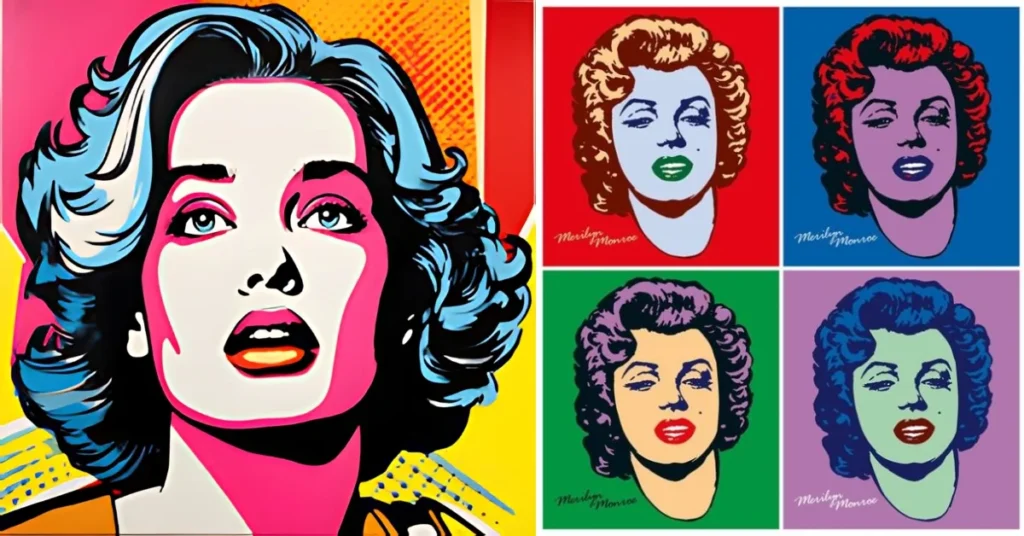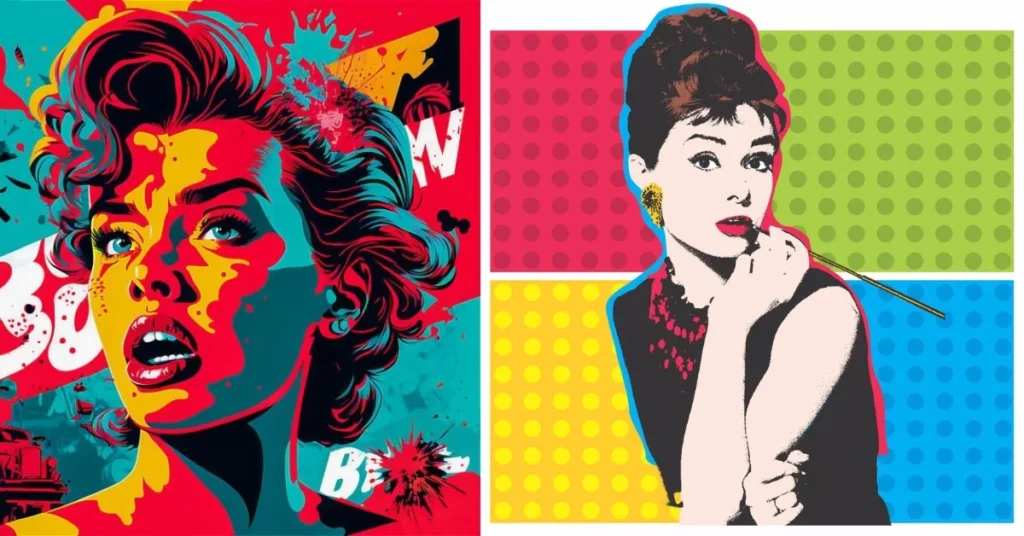
Pop Art has been a significant movement in art, blending popular culture with traditional art forms. Over the years, Pop Art has evolved and adapted, reflecting changes in society, technology, and culture. This article explores the journey of Pop Art from its beginnings to its modern-day interpretations, highlighting its impact on the art world.
Origins of Pop Art
Pop Art emerged as a response to the abstract expressionism of the time, often seen as elitist and disconnected from everyday life. Artists sought to create something more relatable and grounded, leading to the question, “What is pop art?” Pop Art is characterized by using popular and mass-culture elements like advertising, comic strips, and consumer goods.
Artists like Richard Hamilton in Britain and Jasper Johns in the United States used imagery from mass media and consumer products, starkly contrasting their time’s more serious and reflective art movements. This new style quickly gained attention and became a revolutionary approach to art.
Iconic Artists and Their Influence
Art’s rise to prominence brought forward several iconic artists who would leave a lasting impact on the movement and the art world. Andy Warhol is one of the most famous figures, known for his vivid depictions of celebrities like Marilyn Monroe and consumer products such as Campbell’s Soup cans.
Another influential Pop Art figure, Roy Lichtenstein, gained recognition for his comic strip-inspired works. His use of bold colors, thick lines, and Ben-Day dots highlighted the visual language of commercial art and challenged viewers to reconsider the artistic value of mass-produced imagery.
Evolution and Adaptation
During the 1970s and 1980s, the movement expanded beyond the original themes of consumerism and mass media. Artists began incorporating political and social commentary into their works, reflecting the complexities of the world around them. The bright colors and bold imagery remained, but the messages became more nuanced and layered.
The rise of digital art allowed Art to merge with technology, resulting in digital collages and graphic designs that maintain the core principles of Art while exploring modern themes. Pop Art’s flexibility and adaptability have ensured its relevance in contemporary art.
Global Influence and Cultural Impact
Pop Art’s influence has transcended national borders, becoming a global phenomenon. This global influence has led to unique interpretations of the style, combining local cultural symbols with the universal language.
The movement has also significantly impacted other creative fields, such as fashion, graphic design, and advertising. Pop art’s cross-disciplinary nature inspires new generations of artists and creators.
Modern Interpretations and the Future of Pop Art
Art remains a relevant and dynamic force in the art world today. Contemporary artists continue to draw inspiration from the movement, creating works that blend classic. Issues like social justice, environmental concerns, and digital culture are now being explored within the Art framework, showcasing its adaptability and enduring appeal.
With the rise of social media and online art platforms, Art has found a new space to thrive and evolve, bridging the gap between past and present. The future of Pop Art seems promising as it continues to reflect and adapt to the ever-changing landscape of contemporary culture.
Starting as a response to more serious and elitist forms of art, Pop Art brought the elements of everyday life into the spotlight, challenging norms and redefining what art could be. Art remains a dynamic and ever-evolving force, capturing the essence of modern life in all its colorful complexity.

